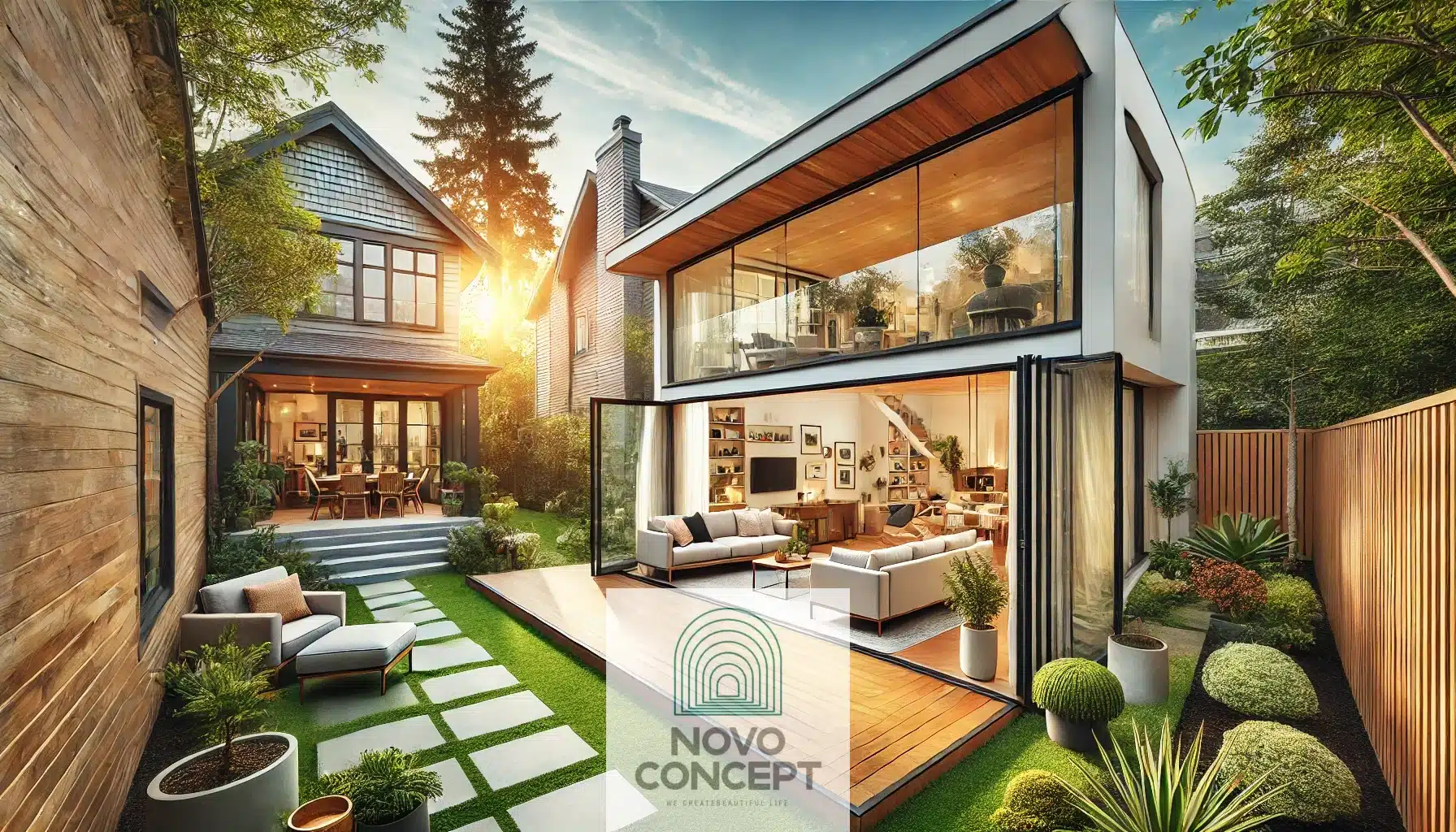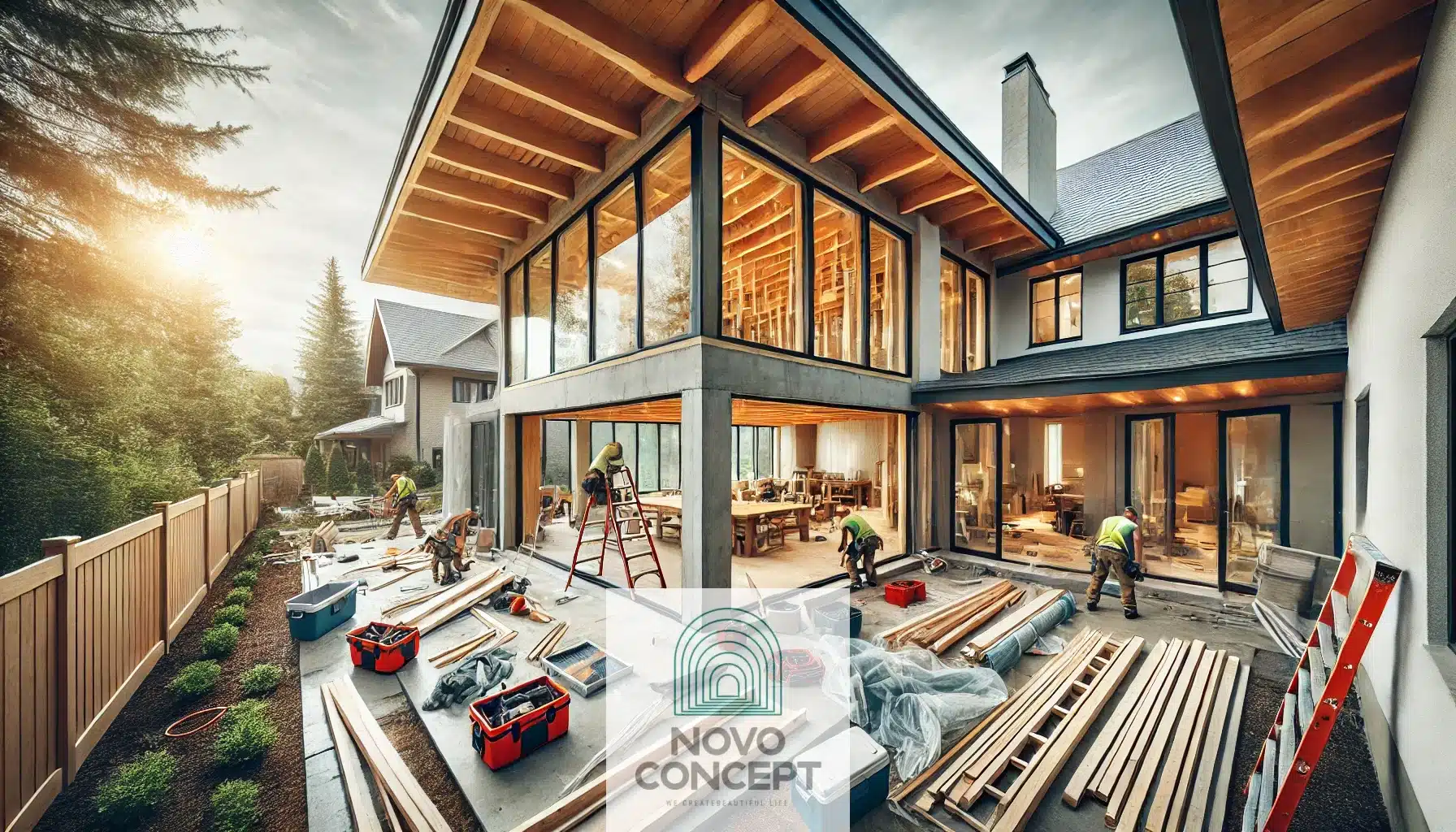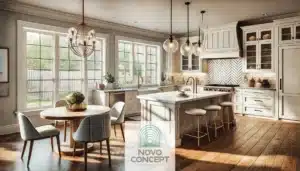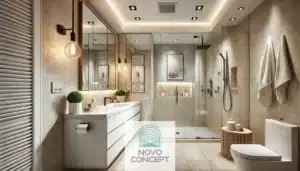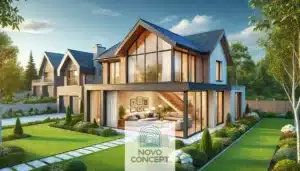Adding a new space to your home is an exciting yet daunting endeavor. Whether you’re expanding for functionality, style, or necessity, the process can feel overwhelming if not approached strategically. However, by implementing a few key steps in this article from Novo Concept, you can simplify the journey and transform your home addition from an intimidating project to a smooth and enjoyable experience. Here’s how to make it happen:
1. Identify Your Needs
Before diving into the design and construction phases, it’s essential to understand what your home addition aims to achieve. Ask yourself the following questions:
- What purpose will this new space serve?
- Why is this addition necessary for your family and lifestyle?
Perhaps you’re adding a bathroom to alleviate morning traffic, creating a sunroom to enjoy natural light, or building an extra bedroom for a growing family. Each type of addition brings unique challenges and opportunities, so clarity is key.
Understand the Functionality
Functionality should be your primary focus. An effective way to approach this is by envisioning how your household will use the space daily. For example:
- Bathroom Addition: Will it serve as a master bath, a guest restroom, or a kid-friendly zone?
- Sunroom: Do you envision a tranquil reading nook or an entertainment area?
- Extra Bedroom: Will it double as a home office or solely accommodate guests?
Being specific about your needs allows you to make informed decisions during the planning phase. Moreover, it prevents you from getting sidetracked by design trends that might not align with your addition’s intended use.
2. Define Your Style
The aesthetic of your new space is just as important as its function. Clearly defining your style helps streamline the design process and ensures your addition blends seamlessly with your existing home.
Create a Vision
Start by collecting inspiration. Platforms like Pinterest and Houzz are excellent tools for finding ideas. Create a mood board to narrow down elements that resonate with you, such as:
- Colors: Are you drawn to neutral tones, bold palettes, or earthy hues?
- Textures and Materials: Do you prefer wood finishes, stone accents, or modern metallics?
- Design and Layout: Are you leaning towards open-concept designs or compartmentalized spaces?
- Fixtures and Finishes: Consider lighting, faucets, and hardware that complement your chosen style.
Ensure Cohesion
One of the biggest challenges with home additions is making them look like a natural extension of the existing structure. Consider the following:
- Match rooflines and exterior materials to maintain visual harmony.
- Use complementary paint colors and flooring for a cohesive interior.
- Balance modern upgrades with the architectural character of your home.
By establishing a clear style early, you’ll save time and reduce stress when making design decisions.
3. Implement a Budget
A well-defined budget is the backbone of any successful home addition. Without proper planning, costs can spiral out of control, leaving you frustrated and potentially unable to complete the project. Here’s how to budget effectively:
Plan for All Costs
When creating a budget, consider both visible and hidden expenses. While features like countertops and fixtures are exciting, it’s crucial not to overlook foundational elements. Key costs to account for include:
- New Foundation: Excavation and concrete work for expanding your home’s footprint.
- Electrical and Plumbing: Upgrades to accommodate the new space.
- Insulation and Windows: Ensuring energy efficiency and comfort.
- Contractor Fees: Labor costs for professional expertise.
- Permits and Inspections: Required approvals from local authorities.
Plan for Contingencies
Unexpected expenses are common in construction projects. Set aside 10-20% of your total budget as a contingency fund. This financial cushion ensures you can handle surprises without compromising the quality of your addition.
4. Hire the Right Contractor for your home addition process
The success of your home addition largely depends on the contractor you choose. A skilled, reliable contractor not only ensures high-quality results but also makes the process less stressful. Here’s how to find the right fit:
Do Your Research
Begin by seeking recommendations from friends, family, or online reviews. Look for contractors who specialize in home additions and have experience with projects similar to yours. Key factors to consider include:
- Portfolio: Review their past work to gauge their style and craftsmanship.
- References: Contact previous clients to ask about their experience.
- Licensing and Insurance: Verify credentials to ensure compliance with local regulations.
Communicate Clearly
Effective communication is crucial when working with a contractor. Share your vision, budget, and timeline upfront to set clear expectations. Additionally:
- Ask for a detailed written contract outlining the scope of work, payment terms, and project timeline.
- Schedule regular check-ins to stay informed about progress and address any concerns promptly.
By selecting the right contractor, you’ll have a trusted partner to guide you through every phase of the project.
Conclusion about home addition process
Adding a new space to your home is a significant investment that requires careful planning and execution. By identifying your needs, defining your style, setting a realistic budget, and hiring the right contractor, you can simplify the process and achieve a home addition that enhances both functionality and aesthetic appeal. With these steps in place, your dream addition can become a seamless, stress-free reality.

